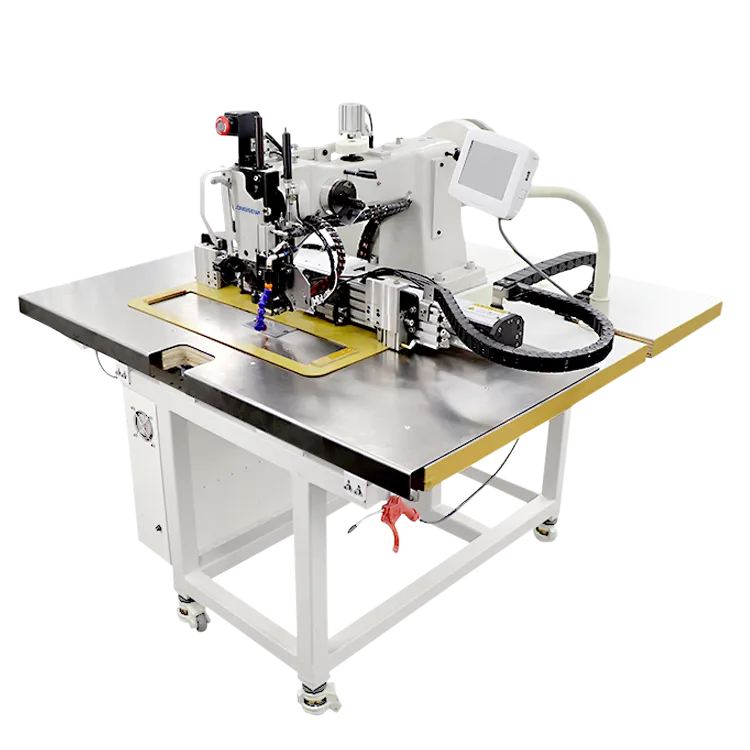what is the difference between coverstitch and overlock
Understanding the Difference Between Coverstitch and Overlock
When it comes to sewing, particularly in the realms of garment construction and finishing, two stitching techniques often arise coverstitch and overlock. Both serve vital roles in achieving durable, professional-looking seams, but they have distinct purposes, features, and finishes. This article will explore the differences between these two types of stitches, their uses, and the machines that produce them.
What is Overlock?
Overlocking refers to a technique commonly executed using a serger (or overlock machine), which is designed to trim and hem fabric edges simultaneously. The key characteristics of overlock stitches include the use of multiple threads—typically three or four choices per seam—and the ability to stretch alongside the fabric. The overlock stitch wraps around the edge of the fabric, preventing fraying while providing a clean finish.
One of the primary benefits of overlocking is speed; it allows sewers to finish edges rapidly, making it a favorite in both home sewing and industrial applications. This technique is perfect for knit fabrics as it maintains the flexibility that is often required in garments like t-shirts, leggings, and stretch sportswear.
Overlockers also provide varying stitch options, allowing for different widths and tensions, which can contribute to the overall appearance and strength of the seam. For most casual sewing enthusiasts, a four-thread overlock stitch offers a balance of security and stretch, but the machine can also produce three-thread options for lighter fabrics or two-thread configurations for minimal finishes.
What is Coverstitch?
Coverstitch, on the other hand, is primarily used for hemming and finishing seams, particularly on knit garments. Unlike the overlock stitch, which wraps around the edge of the fabric, the coverstitch creates a dual row of stitching on the top side while using a flat overlock stitch underneath. This unique construction creates a stretchable and durable seam that not only secures the fabric but also allows it to retain its elasticity.
what is the difference between coverstitch and overlock

Coverstitch machines typically feature two or three needles and at least one looper. The two-needle coverstitch provides two rows of straight stitching on the right side and is often paired with a single looper that creates a flat stitch on the inside. This method is ideal for hems on t-shirts, activewear, and sports bras, where the appearance is just as important as the function.
One of the notable aspects of coverstitching is its ability to create professional finishes for hems without adding bulk, allowing garments to maintain their sleek look. Furthermore, this stitch does not unravel, ensuring that even with wear, the hem remains intact.
Key Differences
1. Function - Overlock Mainly used to finish raw edges and prevent fraying. It’s commonly used in constructing seams and to keep edges neat and tidy. - Coverstitch Primarily used for hemming and providing a stretchable finish for knit fabrics. It’s vital for creating professional-looking hems on garments.
2. Stitch Appearance - Overlock Typically has a looped appearance on the edge and may be visible from the right side if not used in a straight seam. - Coverstitch Has parallel rows on the right side with a flat seam on the underside, making it visually distinct and neat.
3. Machine Type - Overlock Created with an overlock (serger) machine, which trims, stitches and finishes in one operation. - Coverstitch Requires a dedicated coverstitch machine, specifically designed for this kind of stitching.
Conclusion
In summary, both coverstitch and overlock stitches play essential roles in garment making, especially when working with stretchy and knit fabrics. Understanding their differences allows sewers to choose the right technique for the project at hand. Whether you're finishing raw edges with an overlock stitch or creating a polished hem with a coverstitch, mastering these techniques will enhance the quality and durability of your sewing projects. Integrating both methods into your sewing repertoire can lead to a broader range of professional results and ensure your garments not only look great but also last longer.
-
Industrial Cylinder Arm Sewing Machine: Revolutionizing Heavy-Duty SewingNewsJul.28,2025
-
Cylinder Arm Sewing Machine: Perfect for Special Sewing ApplicationsNewsJul.28,2025
-
Cylinder Bed Sewing Machine: Essential for Sewing Complex MaterialsNewsJul.28,2025
-
Heavy Duty Sewing Machine: The Essential Tool for Industrial ApplicationsNewsJul.28,2025
-
Computerized Pattern Sewing Machine: Revolutionizing Precision StitchingNewsJul.28,2025
-
Heavy Duty Industrial Sewing Machine: Power Meets PrecisionNewsJul.28,2025
-
Leather Sewing Machine: The Industrial Standard for Tough MaterialsNewsJul.18,2025





























